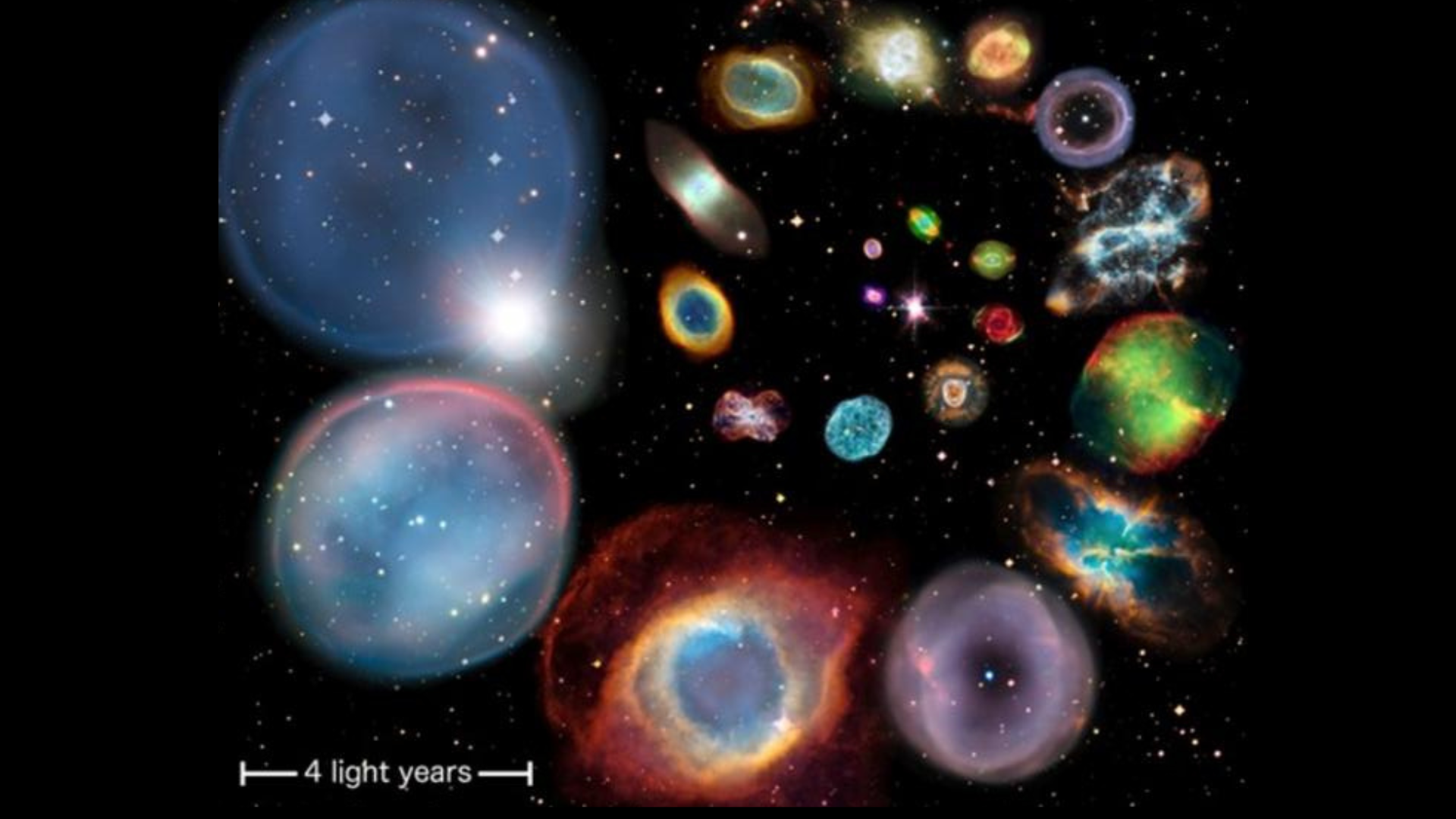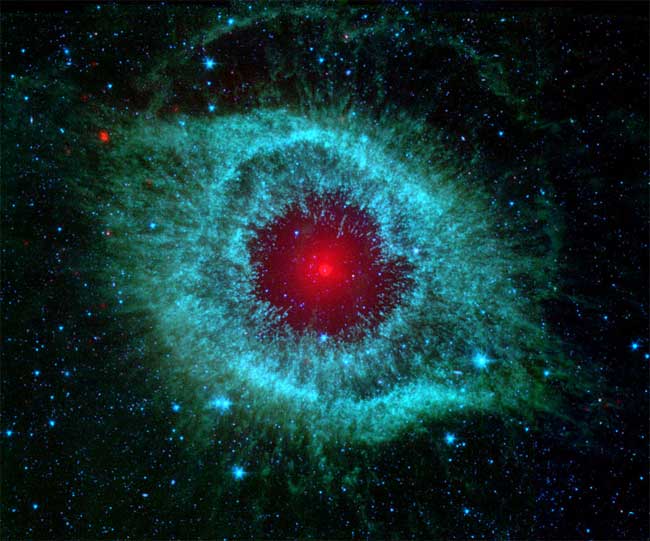Fire but no brimstone: Where is the universe's missing sulfur?
Some of our universe's sulfur is "missing in action," and astronomers may finally know why.

Astronomers may have solved the mystery of why dead stars' death shrouds seem to lack sulfur, an element once known as "brimstone" and associated with the expression "fire and brimstone" in the Bible. Based on theory, a substantial amount of sulfur should be present in stellar wreckage sites across the cosmos.
So, where did the sulfur go?
Astrophysicists from the Laboratory for Space Research (LSR) at The University of Hong Kong (HKU) discovered why such gaseous and dusty wreckage areas, or "planetary nebulas," don't seem to have the expected levels of sulfur. Planetary nebulas exist around stars that have exhausted their nuclear fuel supplies and turned into dense, stellar corpses called white dwarfs,
The team suggests that the expected sulfur content isn't actually absent at all, but rather pulled a fittingly devilish trick as the element is called '"devil's gold" by those that mine it in its solid form on Earth. In short, the sulfur might be hiding in plain sight.
Planetary nebulas come in a surprising range of forms and colors, fascinating professional and amateur astronomers alike. These nebulas provide short-lived "snapshots" of the deaths of stars, making them an important window into the final, hydrogen-burning "main sequence" existence of a star, prompting detailed examinations of their chemical compositions.
Related: James Webb Space Telescope makes rare detection of 2 exoplanets orbiting dead stars
The best trick sulfur ever pulled
Despite the slightly confusing name, planetary nebulas don't actually have anything to do with planets. Unlike protoplanetary disks, frisbees of matter around infant stars that collapse to birth planets, planetary nebulae occur at the opposite end of a star's life.
Get the Space.com Newsletter
Breaking space news, the latest updates on rocket launches, skywatching events and more!
When stars have exhausted their fuel supplies needed for nuclear fusion processes happening at their cores, the energy that pushes outwards and protects each core from the immense inward pull of each star's own gravitational force, is also halted.
The stellar tug-of-war that has balanced a star against collapse for billions of years ends — and gravity is the clear winner. Then, as the core of the star collapses, nuclear fusion still happening in the fiery outer shell of the star causes it to puff out.
This initially turns the star into a red giant star.
The sun will go through this process in around 5 billion years, swelling out to consume the inner planets, including Earth. Yet, as disastrous and irrevocably altering as it can be for orbiting planets close to a dying star, the red giant phase is relatively brief. As a star's outer layers cool and further disperse, they leave a smoldering stellar core, now a white dwarf, surrounded by a death shroud planetary nebula.
Planetary nebulas are also short-lived, however, remaining wrapped around white dwarfs for only tens of thousands of years.
Returning to the missing sulfur conundrum, studies of planetary nebulas that revealed their chemical compositions have shown they are lacking in sulfur. This is something difficult to explain, however, because sulfur should be produced in conjunction with elements like oxygen, neon, argon and chlorine in more massive stars. In fact, sulfur in planetary nebulas should be proportional to those other elements.
Yet this hasn't been observed — especially around dead, intermediate-mass stars.

To crack the planetary nebula sulfur mystery, the team looked at 130 planetary nebulas located at the heart of the Milky Way, an unprecedented dataset unpolluted with background noise, or unwanted information.
The dataset is attributed to the Very Large Telescope, one of the world's most advanced optical telescopes that's located at the Paranal Observatory in Chile's Atacama Desert.
Chemical elements absorb and emit light at characteristic and unique wavelengths, which means that when light passes through a cloud of gas and dust, the elements within leave their fingerprints on this light, or "spectra," facilitating an investigative method called spectroscopy. What the team discovered in its data is that the lack of sulfur is simply the result of poor-quality data for the light emitted through the planetary nebula.
Using their large sample of the planetary nebula with its high signal-to-noise ratio, the researchers saw a strong "lockstep" behavior between sulfur and other elements for the first time, with the previous anomaly effectively disappearing.
The team suggests that these results indicate how important high-quality data is when tackling scientific mysteries.
The team's research was published in January in the Astrophysical Journal Letters.
Join our Space Forums to keep talking space on the latest missions, night sky and more! And if you have a news tip, correction or comment, let us know at: community@space.com.

Robert Lea is a science journalist in the U.K. whose articles have been published in Physics World, New Scientist, Astronomy Magazine, All About Space, Newsweek and ZME Science. He also writes about science communication for Elsevier and the European Journal of Physics. Rob holds a bachelor of science degree in physics and astronomy from the U.K.’s Open University. Follow him on Twitter @sciencef1rst.









